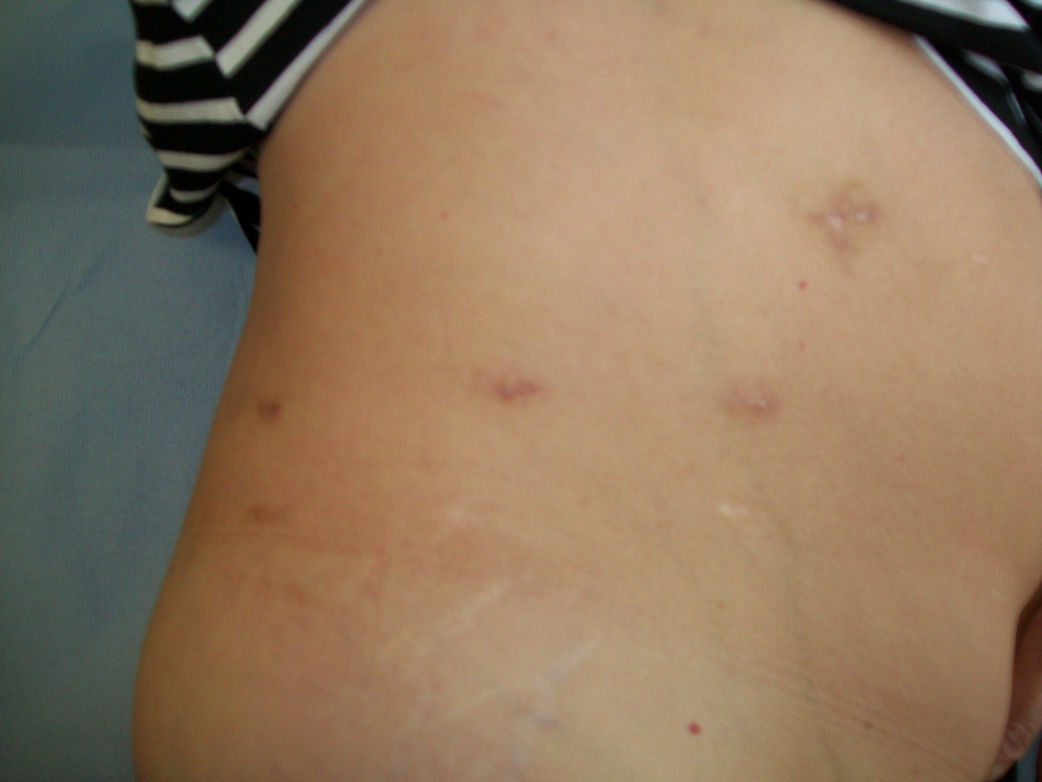Minimally Invasive Adrenal Surgery
In this operation the adrenal gland is removed through 3-4 small cuts on the flank. Recovery from this operation is still usually rapid, but there is often greater postoperative discomfort for a day or two compared to retroperitoneoscopic adrenalectomy. This is because the gas that has to be inserted into the abdominal (or peritoneal) cavity in order to perform this operation usually gives more postoperative pain than the wounds themselves.
Mr Hardy performs this operation for adrenal masses that are too large to be removed by a retroperitoneoscopic approach. This usually means masses larger than 5cm.
The picture below shows typical scars following this procedure. This picture was taken 6 weeks following surgery. The scars will fade over time to become barely visible.
Adrenal masses up to around 5cm in size are suitable for removal by this type of operation. Masses larger than this are usually removed by laparosopic adrenalectomy, which is covered in the following section.

